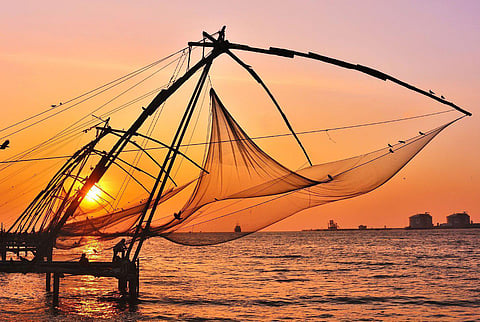Goa's Wetlands & rivers are home to over 80 fish species, say experts
The current status of wetland & river conservation
[rebelmouse-proxy-image https://media.rbl.ms/image?u=%2Fwp-content%2Fuploads%2F2019%2F06%2FFeature-Image-goa-wetland.jpg&ho=https%3A%2F%2Fwww.travelandleisureindia.in&s=56&h=a8ca4f3bb73ebd45669cf5d424f0844421a182577fd47db4844834576a37aaa6&size=980x&c=196896623 photo_credit="" pin_description="" dam="0" site_id=20074994 caption="Representative Image" photo_credit_src="https://www.travelandleisureindia.in/wp-content/uploads/2019/06/Feature-Image-goa-wetland.jpg" crop_info="%7B%22image%22%3A%20%22https%3A//media.rbl.ms/image%3Fu%3D%252Fwp-content%252Fuploads%252F2019%252F06%252FFeature-Image-goa-wetland.jpg%26ho%3Dhttps%253A%252F%252Fwww.travelandleisureindia.in%26s%3D56%26h%3Da8ca4f3bb73ebd45669cf5d424f0844421a182577fd47db4844834576a37aaa6%26size%3D980x%26c%3D196896623%22%7D" expand=1] Representative Image
As per the findings of this report, as many as 18 new species of fish have been identified in Goa. In addition, 15 other crustacean species were also collected and catalogued. Out of the total lot of 84 varieties, five fall under the vulnerable category, while four are near threatened, as per the IUCN criteria.
The research to identify more species is still on said ICAR-CCARI scientist, in a recent event organised here by the Goa State Wetland Authority (GSWA). In the next couple of months, the number is expected to even exceed the 110 mark. Reportedly, Goa’s rivers and wetlands produce around 150 tonnes of fish per year.
Wetlands provide nutrition, food and livelihood, besides other ecosystem goods and services, but are among the most threatened ecosystems. There is immense potential to cultivate the fish yield in Goa's wetlands and rivers, the scientist added. This can benefit nutritional and livelihood security in the state.
What is required to conserve the freshwater ecosystem in Goa?
[rebelmouse-proxy-image https://media.rbl.ms/image?u=%2Fwp-content%2Fuploads%2F2018%2F08%2FGLOW_broadwater_mangrove_underwater17.jpg&ho=https%3A%2F%2Fglobalwetlandsproject.org&s=972&h=5a3d1c640f1279d282f6a845d840461e62e5e34b0c181c429664df11dccb1cf3&size=980x&c=779325978 photo_credit="" pin_description="" dam="0" site_id=20074994 caption="Representative Image" photo_credit_src="https://globalwetlandsproject.org/wp-content/uploads/2018/08/GLOW_broadwater_mangrove_underwater17.jpg" crop_info="%7B%22image%22%3A%20%22https%3A//media.rbl.ms/image%3Fu%3D%252Fwp-content%252Fuploads%252F2018%252F08%252FGLOW_broadwater_mangrove_underwater17.jpg%26ho%3Dhttps%253A%252F%252Fglobalwetlandsproject.org%26s%3D972%26h%3D5a3d1c640f1279d282f6a845d840461e62e5e34b0c181c429664df11dccb1cf3%26size%3D980x%26c%3D779325978%22%7D" expand=1] Representative Image
In order to sustainably develop the freshwater ecosystem, mitigation measures are required. These include the desiltation of wetlands, sensitisation of stakeholders, opening and widening of linkage channels and integrated approach towards wetland management, among others.
As per the National Green Tribunal’s (NGT) directives, the river rejuvenation committee is working to prepare an action plan to restore polluted riverine stretches in Goa. This would require expediting coverage of the sewerage network in Goa, with treatment plants to help reduce pollution of the state rivers.
- With inputs from TOI
To get all the latest content, download our mobile application. Available for both iOS & Android devices.

